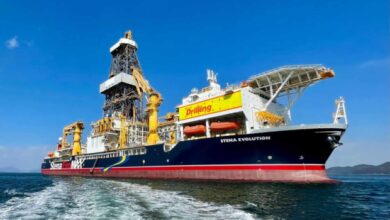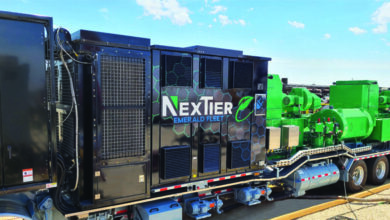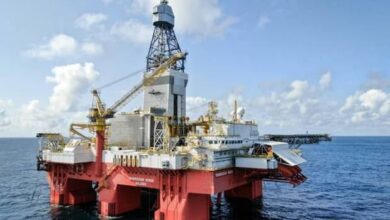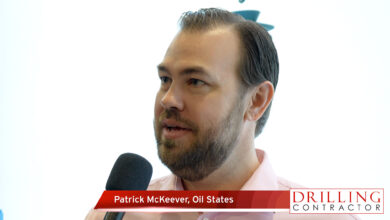IOGP JIP, configurable equipment platforms propel industry toward standardized completion designs
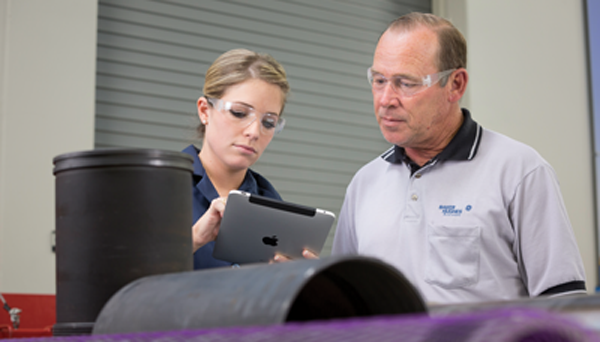
JIP 33 leads industry equipment standardization efforts to realize cost, time savings by ‘designing once, building many’
By Kelli Ainsworth Robinson, Associate Editor
Oil and gas companies are increasingly looking to new business models and strategies that will help them maximize profits in a lower-for-longer environment. One approach that appears to be gaining momentum is equipment standardization, rather than developing bespoke designs for each project.
Already, major operators are citing standardization as among critical factors that have allowed them to bring projects online under budget. In January 2017, BP announced that its Thunder Horse development in the Gulf of Mexico was brought online at more than 15% below budget because the operator and its partners relied on proven standardized equipment and technology, rather than building customized components.

In February 2018, the newly renamed Equinor (formerly Statoil) announced that it had been able to drive breakevens down to $15/bbl on its massive Johan Sverdrup development in the North Sea. In a press release, the company explained that its decision to use standardized equipment packages on this project contributed to this feat.
According to an analysis recently commissioned by BP from McKinsey, standardization can save operators between 10% to 20% over the life of a project. At the same time, the analysis found that standardization could reduce equipment lead times by 20% to 40%.
With completions being a capital-intensive phase of well construction that greatly impacts the well’s overall productivity over its life, many standardization efforts have been focused on completions. The International Association of Oil & Gas Producers (IOGP) is managing JIP 33, which brings together operators and equipment manufacturers to standardize a range of equipment and packages. One of the JIP’s goals is for the industry to eventually extend standardization to entire installations.
Individual service and equipment providers are also developing standardized or configurable platforms for packers, liner hangers and valves.
The goal with standardization, said Chris Hawkes, Safety Director at IOGP, is to make oil and gas installations similar to airplanes. “If United and Singapore Airlines each order a Boeing 787, it will be the standard 787,” he said. “The differentiation is in the paint work and seating on the inside, not in the hardware or equipment. That’s where we want to eventually get to in the oil and gas industry.”
If companies let go of their individual specifications and move toward standardization, they will not only see a reduction in equipment costs and lead time but also improvements in reliability, Mr Hawkes said. The more a particular piece of equipment is built the same way and to the same specifications, the more companies can learn about their failure modes.
Over time, that will enable manufacturers to improve the reliability of that equipment. “They will understand the faults, and they will learn what needs to be redesigned,” he said. “Historically, in the oil and gas industry, every installation is a prototype. It’s unique and the first of its kind. We can’t really improve the designs or the manufacturing processes when everything is a one-off.”
However, to truly move toward standardized equipment and installations, a cultural change has to take place within oil and gas companies. Often, such companies are attached to their own internally developed standards, Mr Hawkes said. They can also be risk-averse, or may believe that customization is necessary to achieve redundancy, with the goal of avoiding downtime.
Even though operators often partner with other oil and gas companies, particularly on deepwater projects, and may work according to their partner companies’ specifications, it can be difficult to convince them to accept a standardized approach, Mr Hawkes said.
Developing standards from components to installations
Through JIP 33, “Standardization of Equipment and Packages,” IOGP seeks to demonstrate the value of standardization and to help operators “realize some of the cost savings and economies of scale by designing once and building many,” Mr Hawkes said.

The JIP launched in 2015 following an IOGP benchmark review and a meeting of oil and gas CEOs at that year’s World Economic Forum in Davos, Switzerland.
To kick off the JIP, members decided to initially target subsea Christmas trees, ball valves and low-voltage switch gears for standardization. These pieces of equipment were selected because they’re common across operations and were seen as non-competitive. The JIP’s standard for low-voltage switch gear was published in November 2016, with the subsea tree and ball valve standards following in December.
The JIP is currently in Phase Two, which calls for developing standards for the design, build and testing of air compressor packages, centrifugal pumps, gate valves, high-voltage switch gear and pressure valves, and updating standards that were developed in Phase One for subsea Christmas trees and ball valves. Additionally, Phase Two is focused on embedding previously developed standards into operator companies and raising awareness of the JIP’s work across the industry. It also encompasses developing key performance indicators to measure the implementation of standardized equipment, as well as the value operators see from this equipment. Phase Two is expected to complete its work by the end of 2018.
Current JIP members include BP, Chevron, Equinor, Eni, ExxonMobil, Petrobras, Saudi Aramco, Shell and Total.
Phase Three will kick in when Phase Two ends, although the exact scope of work has yet to be defined, Mr Hawkes said. “We will look toward standardizing packages – compressors, pump packages, that sort of thing – and then eventually move into whole installations.”
Eventually, he said, the JIP envisions having wells and FPSOs constructed to a common set of industry standards, which would significantly reduce the time and cost required to bring projects online, as less engineering work will be needed and manufacturers will be able to build, qualify and deliver components more quickly. However, he added, it will likely take years for the industry to reach the point where there’s an accepted industry standard for packages, much less installations.
The JIP recognizes that there cannot be a one-size-fits-all standard ball valve or Christmas tree that’s installed in every well completion in the world, Mr Hawkes said. However, by setting a few configurable standards that require minimal modifications for a range of applications, cost savings can be achieved. “Clearly, there are differences in reservoirs and fluid composition,” he said. “But there is no reason to have completely different valves or compressors, as long as they’re rated to the correct pressure rating.”
Standardizing well delivery
While certain aspects of completions, most notably the downhole monitoring components of intelligent completions systems, are still heavily customized, there’s an increasing willingness to adopt standard equipment for other types of completions, Jim Sessions, Vice President-Marketing and Commercialization, Completions and Well Intervention at Baker Hughes, a GE company, said. “I would say standardization across segments like flow control, safety valves, packers and liners hangers is really maturing.”
There’s more room to grow, however. He noted that approximately 70% to 80% of completions around the world could be done with standard-style equipment. Only the 20% to 30% of completions that are in high-pressure, high-temperature environments or new frontiers truly require a more bespoke approach due to the associated complexities, he added.
Although BHGE has been pushing standardization for the better part of a decade, Toby Begnaud, President, Completions and Well Intervention, said it’s taken this most recent downturn to direct the industry’s focus to cost reduction, which in turn helped to make headway in terms of standardization. “There’s a different level of efficiency required to survive in the market going forward. We still see a lot of requests for customization, but we’re also seeing a greater willingness to align more to a standard in some cases.”
BHGE currently offers several levels of standardization in its completion tools. At the most standardized level, the company offers off-the-shelf tools, including packers, liner hangers, flow control systems, sand control systems and valves.
“When that’s the case, the lead time is only as long as it takes to get it from our warehouse to the rig site,” Mr Sessions said. As more operators incorporate more standardized equipment into their completions designs, BHGE believes it will be able to get a better sense of the demand for off-the-shelf equipment build. This will improve their capability to stock multiple contingency liner hangers, for example, in their warehouses that would be ready to send out as soon as an order is placed.
The second level of standardization is for “configure to order” tools, where the base of the tool is built while frequently customized elements, like the threads on a liner hanger, are left unfinished. “We’ll have 80% of the tool complete and do some finishing touches based on customer requests,” Mr Sessions said. Because the entire tool isn’t built-to-order, it can be delivered as soon as the finishing touches are made.
Configure-to-order tools can be delivered up to 65% faster than a more highly engineered solution, according to the company.
In addition to individual standardized pieces of equipment, BHGE is also working with operators to develop integrated, standardized completion packages. Such packages can help operators to achieve better well recovery than a standardized liner hanger here or packer there, Mr Sessions said. “We actually see more and more companies wanting the full, integrated well. We see it progressing to where it’s less about the individual product and more about a solution or well delivery.”
- Deconstructing invisible lost time: KPIs, analytics, standardization improve well deliveries in Bakken
- Selective standardization approach could help industry sidestep market barriers, achieve full automation
- Offshore industry, beset by project deferrals, rig contract terminations, looks to standardization, reliability for long-term cost reductions
Standardized completion equipment and packages can improve project economics, but for operators to see the maximum benefit from standardization, it has to go beyond completions and through the entire value chain, Mr Sessions said. It’s easier to introduce standardized completions equipment when the wells themselves are more standardized and less variable.
“To standardize, we need the same casing design and configuration. We certainly have operators who have done that. They’re very disciplined around making sure they’re doing things in a consistent way, and they’ve dramatically lowered their lifting costs,” he said.
Common architecture and building blocks
For the past few years, Schlumberger has been taking a platform approach to completions equipment, including packers, intelligent completions, safety valves and isolation valves. Under this approach, equipment is built using common building blocks that can be easily modified with standard components. It’s similar to a line of cars, Tamer Shoukry, Schlumberger Marketing and Technology Manager for Well Construction and Core Completions, said.
Generally, a car might come in various models, such as economy, luxury or sport edition, and a buyer can add options like leather seats or a sunroof if they wish, but the car is not built from the ground up for each individual customer.
A recent example of this methodology at Schlumberger is the BluePack production packers family, introduced in June 2016 followed by other packer configurations over the past two years. Although components of the packer design can be customized, “they’re customizable within a platform, within a common architecture,” Mr Shoukry said.
The BluePack RH retrievable hydraulic-set production packer is designed for vertical and deviated wells for production and injection well applications. Similarly, the BluePack ESP retrievable hydraulic-set ESP production packer is designed for artificial lift applications with pressures up to 5,000 psi and temperatures up to 325°F and is validated to API 11D1 / ISO 14310 V3.
The BluePack Ultra RH-MP ultra-high pressure retrievable hydraulic-set, multiport production packer has an ISO V0 rating and is designed for pressures up to 15,000 psi and temperatures up to 300°F. The BluePack Ultra PH ultra-high pressure permanent hydraulic-set production packer is suited for applications up to 15,000 psi and temperatures up to 350°F.
The BluePack Max RH high-pressure retrievable hydraulic-set production packer is rated for up to 10,000 psi and 400°F.
These BluePack Ultra RH-MP, BluePack Ultra PH and BluePack Max RH are validated to ISO 14310/API 11D1 V0. As a standard, the packers in this platform are set hydraulically, although the option to hydrostatically set the packers is available in some models. “The BluePack packers allows us to respond to a wide variety of applications that the customers would require,” Mr Shoukry said.
An operator can select the packer that’s best-suited for its well environment while configuring certain components and sub-assemblies of the packer based on the specific needs or challenges of the well. For instance, an operator might customize the elastomer based on the chemical properties of the fluids that will be in the well. Additionally, the operator could opt to customize the retrieval technique, choosing between cut-to-release or pull-to-release.
The BluePack Max RH packer was designed in a modular way that allows switching between a cut- and a pull-to-release mechanism in the field, using a conversion kit. This allows cost-effective management of inventory for different applications and well challenges, he said.
In 2018, the BluePack Max RH packer was deployed in an offshore well in Asia, with temperatures in excess of 150°C. The operator required production packers with V0 ratings that would provide integrity for approximately 20 years. Because the packer is developed as part of a configurable platform, Schlumberger was able to deliver it with a short lead time. The operator has used packers from this family to complete five wells with 9 ⅝-in. upper completions.
Although standardization is widely hailed for its ability to reduce lead time and project costs, it also gives service and equipment providers the ability to optimize their workforce, Mr Shoukry said. When equipment is bespoke, employees must be trained each time on how the equipment should be run; learning from previous deployments is also difficult.
“Delivering the right packer, the first time and every time is key in making sure we support our customers in managing their CAPEX and OPEX effectively,” he said. However, that’s challenging to do when employees are frequently running a highly customized packer.
At the same time, he added, standardization makes it easier to move employees from one location to another if operators don’t each operate to different standards. “We not only care about the equipment standardization, but we also care about the standardization in deployment through development of our human capital; that is equally important in the standardization approach.” DC


